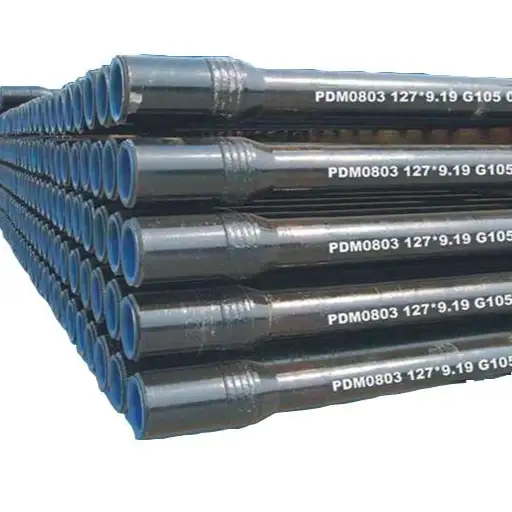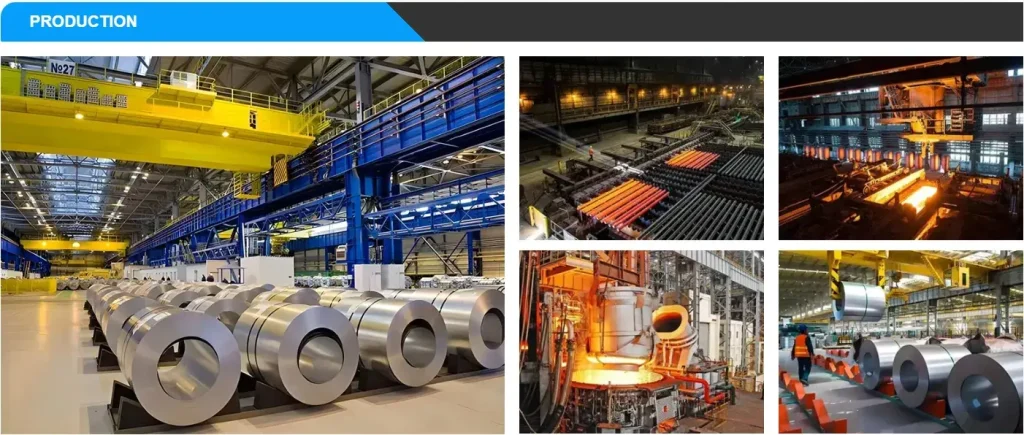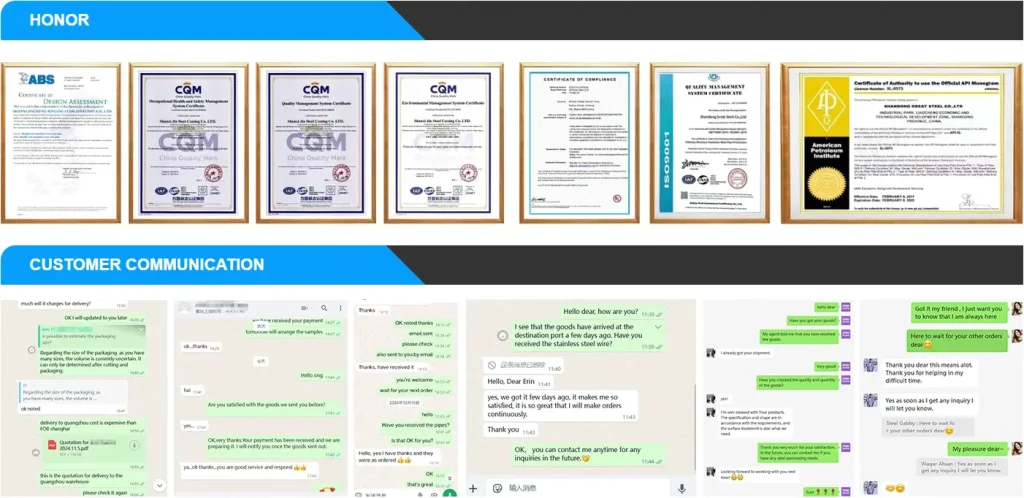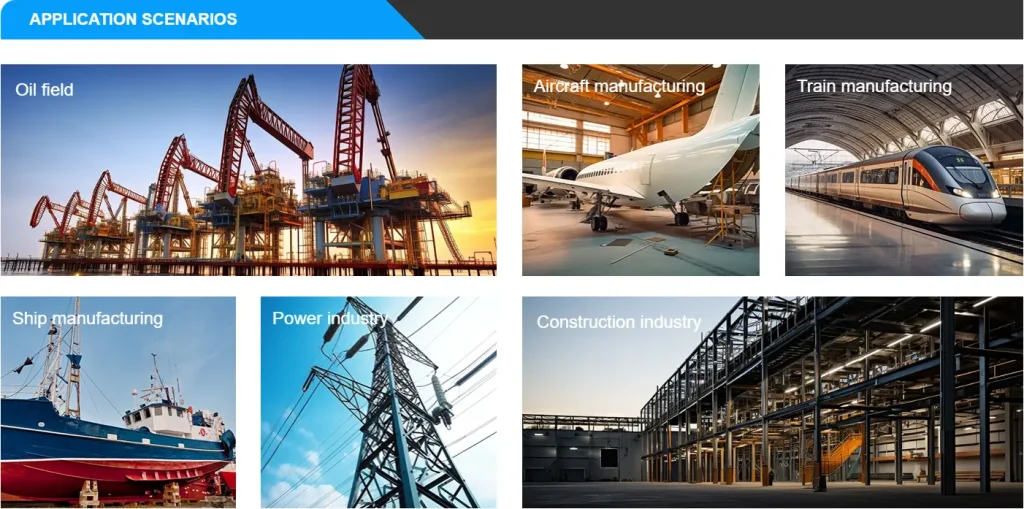As a metal materials expert at Luokaiwei, I’m uniquely positioned to discuss API 5DP Drill Pipe, a critical component in the oil and gas industry. Let me say this upfront: when you’re considering API 5DP Drill Pipe, you’re looking for a product that combines immense strength, precise engineering, and unwavering reliability under extreme conditions. While prices fluctuate based on grade, size, and market demand, you can typically expect to see costs ranging from $5,000 to $30,000 per joint (a single length, often 30-45 feet), with specialized connections or higher grades pushing towards the upper end. At Luokaiwei, we are committed to providing 100% factory prices directly to our clients, backed by our capacity for customization, ensuring you receive exactly the high-quality drill pipe you need, tailored to your project’s exact specifications.
What is API 5DP Drill Pipe?
API 5DP Drill Pipe is essentially the muscular arm that drills into the Earth to extract oil and gas. It’s a heavy, seamless steel pipe that connects the drilling rig’s surface equipment to the drill bit at the bottom of the wellbore. Its primary function is threefold: to transmit rotational torque from the surface to the bit, to provide a conduit for drilling fluid (mud) to be pumped down to the bit and return cuttings, and to withstand the immense tensile and compressive forces encountered during drilling.
The “API 5DP” designation is crucial. It refers to the American Petroleum Institute Specification 5DP, which sets the global standard for drill pipe manufacturing. This standard covers everything from material grades and mechanical properties to dimensional tolerances, inspection criteria, and testing procedures. From my perspective, working with materials that meet or exceed API 5DP ensures not just operational efficiency but, more importantly, safety and reliability in highly demanding drilling environments. Without this backbone, modern drilling simply wouldn’t be possible.
Key Factors Influencing API 5DP Drill Pipe Price
The cost of API 5DP Drill Pipe is a significant portion of any drilling budget. Its price is shaped by a complex interplay of material science, manufacturing precision, and global market dynamics. Here’s a breakdown of what influences the price you pay:
1. Steel Grade: Strength and Resilience
The steel grade is arguably the most impactful factor on price. API 5DP specifies several common grades, each with increasing strength and, therefore, cost:
- E-75: This is the lowest strength grade, suitable for shallow wells or less demanding operations. It offers good ductility.
- X-95: A higher strength grade, providing increased resistance to collapse and tension.
- G-105: Another step up in strength, commonly used for deeper wells.
- S-135: The highest strength standard grade, designed for the most demanding deep and directional drilling applications, where high tensile and torsional loads are expected.
Higher strength grades require more complex alloying elements, stricter heat treatment, and more rigorous testing, all of which contribute to a higher price per joint.
2. Pipe Dimensions: Diameter, Wall Thickness, and Length
The physical size of the pipe directly impacts the amount of steel used and the complexity of manufacturing.
- Outside Diameter (OD): Common sizes range from 2 3/8 inches to 6 5/8 inches. Larger diameters require more material and heavier manufacturing equipment, increasing cost.
- Wall Thickness (Weight per foot): Thicker walls mean more steel, higher strength, and greater cost. Drill pipe is often specified by its “weight per foot” (e.g., 10.40 lb/ft, 13.30 lb/ft for 4 1/2″ OD), which correlates directly to wall thickness.
- Length: Drill pipe joints typically come in Range 2 (approximately 27-30 feet) or Range 3 (approximately 38-45 feet). Longer joints reduce the number of connections required in a drill string, but can be more challenging to transport and manufacture.
3. Connection Type: The Critical Link
The type of tool joint connection welded to each end of the pipe is critical for both performance and cost. These connections are proprietary designs that ensure strength, seal integrity, and ease of make-up/break-out. Popular connections include those licensed from companies like TenarisHydril, VAM, Grant Prideco, and others. Licensing fees, machining precision, and complexity of the thread profile all add to the cost. Generic or API-specified connections (e.g., NC50) might be slightly less expensive than premium proprietary ones, but often with trade-offs in performance.
4. Manufacturing Process and Quality Control: Precision is Paramount
The entire manufacturing process, from steel melting to final inspection, significantly influences the cost.
- Seamless vs. Welded: API 5DP drill pipe is almost exclusively seamless, meaning it’s produced from a solid billet without a weld seam. This process is more complex than welded pipe manufacturing, contributing to its higher cost but also ensuring superior integrity.
- Heat Treatment: Achieving the specified mechanical properties (tensile strength, yield strength, impact toughness) for various grades (E-75, S-135) requires precise heat treatment processes like quenching and tempering, which are energy-intensive and add considerable cost.
- Non-Destructive Testing (NDT): Rigorous NDT, including ultrasonic testing, magnetic particle inspection, and electromagnetic inspection, is mandatory to detect any flaws. The more stringent the inspection, the higher the cost of manufacturing.
5. Raw Material Costs: Steel and Alloys
Like all steel products, the price of iron ore, scrap steel, and crucial alloying elements (manganese, chromium, molybdenum, nickel) directly impacts the pipe’s cost. These commodity prices are subject to global supply and demand fluctuations.
6. Market Demand and Supply: Global Drilling Activity
The overall health of the global oil and gas industry, particularly drilling activity (number of active rigs), directly dictates demand for drill pipe. High demand, especially during boom cycles, can push prices up, while downturns lead to lower prices and excess inventory.
7. Logistics and Transportation: Getting it to the Rig
Shipping heavy, long pipe sections from the manufacturing plant to the port, then by sea to the destination country, and finally by truck to the rig site, involves substantial logistical costs. Fuel prices, port congestion, customs duties, and the remoteness of the drilling location all add to the final delivered price.
API 5DP Drill Pipe Specifications
When talking about API 5DP Drill Pipe, the specifications are what define its performance. These aren’t just numbers; they are guarantees of reliability.
Chemical Composition (Illustrative, typical ranges for API 5DP grades)
The exact chemical composition varies slightly by manufacturer and specific grade, but generally adheres to the following approximate ranges to achieve the desired mechanical properties:
| Element | E-75 (%) | X-95 (%) | G-105 (%) | S-135 (%) |
| Carbon (C) | 0.20-0.30 | 0.25-0.35 | 0.28-0.38 | 0.30-0.40 |
| Manganese (Mn) | 0.80-1.50 | 0.80-1.60 | 0.80-1.70 | 0.80-1.80 |
| Silicon (Si) | 0.15-0.35 | 0.15-0.35 | 0.15-0.35 | 0.15-0.35 |
| Sulfur (S) | le0.030 | le0.030 | le0.030 | le0.030 |
| Phosphorus (P) | le0.030 | le0.030 | le0.030 | le0.030 |
| Chromium (Cr) | le0.30 | le0.40 | le0.50 | le0.60 |
| Molybdenum (Mo) | le0.10 | le0.15 | le0.20 | le0.25 |
| Nickel (Ni) | le0.30 | le0.30 | le0.30 | le0.30 |
Note: These are general ranges. Actual specifications are detailed in API Spec 5DP and controlled by the specific steel melting process to meet mechanical properties.
Mechanical Properties (Minimum Requirements as per API 5DP)
These properties dictate the pipe’s ability to withstand the forces encountered during drilling.
| Grade | Yield Strength (min psi) | Tensile Strength (min psi) | Elongation (%) | Hardness (HBW max) |
| E-75 | 75,000 | 100,000 | 22 | 229 |
| X-95 | 95,000 | 105,000 | 20 | 241 |
| G-105 | 105,000 | 115,000 | 18 | 255 |
| S-135 | 135,000 | 145,000 | 15 | 290 |
Yield Strength: The maximum stress a material can withstand before permanent deformation.
Tensile Strength: The maximum stress a material can withstand before breaking.
Elongation: A measure of ductility, or how much a material can stretch before breaking.
Common Specifications and Dimensions (Illustrative)
While many combinations exist, here are common dimensions for API 5DP drill pipe:
| Outside Diameter (OD) | Wall Thickness (in) | Nominal Weight (lb/ft) | Grade (Common) | Length Range (ft) | Typical Connection |
| 2 7/8 in | 0.217 | 6.50 | E-75, X-95 | R2 (27-30), R3 (38-45) | NC26, NC31 |
| 3 1/2 in | 0.254 | 9.50 | E-75, X-95, G-105 | R2 (27-30), R3 (38-45) | NC38 |
| 4 in | 0.226 | 11.85 | X-95, G-105 | R2 (27-30), R3 (38-45) | NC40 |
| 4 1/2 in | 0.337 | 16.60 | G-105, S-135 | R2 (27-30), R3 (38-45) | NC46, NC50 |
| 5 in | 0.362 | 19.50 | G-105, S-135 | R2 (27-30), R3 (38-45) | NC50, 5 1/2 FH |
| 5 1/2 in | 0.361 | 22.20 | G-105, S-135 | R2 (27-30), R3 (38-45) | 6 5/8 FH |
Advantages of API 5DP Drill Pipe
From a material science standpoint, the advantages of API 5DP Drill Pipe are clear and directly tied to its rigorous manufacturing standards:
- High Strength-to-Weight Ratio: This pipe is designed to be strong enough to withstand enormous tensile and torsional loads while remaining as light as possible to minimize drilling costs and improve drilling efficiency.
- Excellent Fatigue Resistance: During drilling, the pipe undergoes constant rotation, bending, and vibration. API 5DP standards ensure the pipe material and connections are designed to resist fatigue failure, which is critical for operational longevity and safety.
- Corrosion Resistance (Enhanced): While not typically made of stainless steel, drill pipe can be supplied with internal plastic coatings or made from corrosion-resistant alloys (CRAs) for specific hostile environments (e.g., sour service). The standard steel itself is formulated to resist general downhole corrosion.
- Dimensional Accuracy and Consistency: Strict adherence to API standards means precise OD, ID, and wall thickness, ensuring consistent performance, proper fit-up with tool joints, and predictable hydraulic behavior of drilling fluids.
- Reliable Connections: The precisely machined tool joints and stringent inspection ensure robust, leak-proof connections that can be repeatedly made up and broken out without failure, which is vital for efficient tripping operations.
- Safety: By conforming to API 5DP, drill pipe undergoes rigorous testing to detect flaws, minimizing the risk of in-hole failures that can be catastrophic, leading to costly fishing operations or even well abandonment.
API 5DP Drill Pipe Manufacturing Process: Precision from Ingot to Joint
The creation of API 5DP Drill Pipe is a testament to modern metallurgy and engineering. As a metal materials expert, I appreciate the complexity involved:
- Steel Melting and Casting: High-purity steel, with carefully controlled chemical composition, is melted in an Electric Arc Furnace (EAF) or Basic Oxygen Furnace (BOF). It’s then cast into solid billets or blooms. This is where the foundation for the specific grade (E-75 to S-135) is laid.
- Billet Preparation: The billets are heated to forging temperature.
- Piercing: A solid billet is pierced over a mandrel, creating a seamless hollow tube. This is a critical step for seamless pipe.
- Rolling/Sizing: The rough tube is then hot-rolled through various mills to achieve the desired outside diameter and wall thickness. This process refines the grain structure.
- Heat Treatment: This is a crucial phase for achieving the specified mechanical properties. The pipe undergoes precise quenching (rapid cooling) and tempering (reheating to a specific temperature) cycles to attain the required yield strength, tensile strength, and hardness for its API grade.
- Straightening: Pipes are straightened to ensure they meet dimensional tolerances for straightness.
- Non-Destructive Testing (NDT): Each pipe undergoes multiple NDT methods, including ultrasonic testing (for internal and external flaws), magnetic particle inspection (for surface defects), electromagnetic inspection (EMI for longitudinal and transverse defects), and sometimes even eddy current testing. This step is vital for ensuring integrity.
- Cutting and Beveling: Pipes are cut to specified lengths (e.g., Range 2 or Range 3) and ends are beveled for welding.
- Tool Joint Forging and Machining: Separate tool joint forgings (made from higher strength steel) are precisely machined with the pin and box connections (e.g., NC50, FH). These threads are cut with extreme precision.
- Friction Welding: The precisely machined tool joints are then attached to the pipe body using friction welding. This highly controlled process creates a strong metallurgical bond, ensuring the tool joint is inseparable from the pipe body.
- Post-Weld Heat Treatment (PWHT): The weld area is typically subjected to localized heat treatment to relieve residual stresses and restore properties after welding.
- Final Inspection and Coating: The finished drill pipe joint undergoes a final comprehensive inspection, including dimensional checks, visual inspection, and often internal coating application (e.g., plastic lining) for corrosion protection. Each joint is then stenciled with its grade, size, weight, and API monogram.
Global Market Price Comparison Table (Illustrative)
The price of API 5DP Drill Pipe is a global commodity, affected by regional demand, manufacturing capacity, and logistics. Below are illustrative price ranges per joint (a single length, typically 30-45 ft) for common sizes and grades, as of mid-2025. These are estimates and can fluctuate based on specific connections, coatings, and order volumes.
| Pipe Size (OD x Weight) | Steel Grade | Estimated Price Range per Joint (USD) | Notes |
| 4 1/2″ x 16.60 lb/ft | E-75 | $5,000 – $8,000 | Entry-level for standard drilling. |
| 4 1/2″ x 16.60 lb/ft | X-95 | $7,000 – $10,000 | Common for conventional applications. |
| 4 1/2″ x 16.60 lb/ft | G-105 | $9,000 – $14,000 | Workhorse for deeper wells. |
| 4 1/2″ x 16.60 lb/ft | S-135 | $12,000 – $20,000 | High-performance, most expensive standard grade. |
| 5″ x 19.50 lb/ft | G-105 | $10,000 – $16,000 | Larger diameter for increased flow/torque. |
| 5″ x 19.50 lb/ft | S-135 | $15,000 – $25,000 | Heavy-duty applications. |
| 5 1/2″ x 22.20 lb/ft | S-135 | $18,000 – $30,000+ | Largest common size, highest demand in deep drilling. Premium connections can push prices even higher. |
Note: These prices are for new, unused pipe. The cost of used or re-certified pipe can be significantly lower but comes with different risks and inspection requirements.
API 5DP Drill Pipe Applications: Where It’s Used
API 5DP Drill Pipe is exclusively designed for, and central to, drilling operations in the oil and gas industry. Its applications span various phases and types of drilling:
- Vertical Drilling: The most straightforward application, where drill pipe forms the vertical column extending from the rig to the target formation.
- Directional Drilling: Crucial for reaching reservoirs that are not directly beneath the rig. Drill pipe is used to steer the wellbore horizontally or at complex angles.
- Horizontal Drilling: Essential for maximizing reservoir exposure. Drill pipe, especially with higher strength grades, is critical for pushing long horizontal sections.
- Offshore Drilling: Used on drilling platforms and drillships in marine environments, where robust and corrosion-resistant pipe is paramount due to harsh conditions.
- Onshore Drilling: Employed in various geological conditions across land-based oil and gas fields.
- Exploration and Production (E&P): Fundamental for both initial exploratory wells and subsequent production wells.
API 5DP Drill Pipe vs. Other Pipe Types
Understanding how API 5DP Drill Pipe stands apart from other pipe types used in the oil and gas industry is critical:
| Feature/Characteristic | API 5DP Drill Pipe | API 5CT Casing & Tubing | API 5L Line Pipe |
| Primary Function | Transmits torque, weight, circulates mud; part of rotating drill string. | Lines the wellbore (casing), extracts fluids (tubing); static. | Transports oil/gas/water/slurry over distances; static. |
| Applied Forces | High torsional, tensile, compressive, bending, fatigue, internal pressure. | High internal/external pressure, collapse, tension. | Internal pressure, external loads, corrosion. |
| Connections | High-strength threaded tool joints (e.g., NC50, proprietary designs) welded on. Designed for frequent make-up/break-out. | Threaded and coupled (API threads like BTC, LTC, STC; premium connections for higher performance). Not for rotation. | Beveled ends for welding; some threaded & coupled. |
| Manufacturing | Seamless; precise heat treatment for high mechanical properties; often internal plastic coating. | Seamless or ERW (Electric Resistance Welded); specific grades for collapse/tensile strength. | Seamless or ERW; less stringent mechanical properties than drill pipe. |
| Typical Lengths | Range 2 (27-30 ft), Range 3 (38-45 ft). | Range 1 (20-24 ft), Range 2 (30-34 ft), Range 3 (38-45 ft). | Standard lengths (e.g., 40 ft, 60 ft). |
| Typical Cost/Joint | Highest due to severe duty, precision manufacturing, specialized connections. | Medium to High, depending on grade and size. | Lowest, designed for bulk transport. |
As you can see, API 5DP Drill Pipe is a specialized workhorse, engineered for the dynamic and brutal forces of drilling, making it distinct and typically more expensive than other pipes used for static applications.
Case Study: High-Performance Drilling in Bahrain with Luokaiwei S-135 Drill Pipe
Let me share a practical example from my experience. Recently, a major drilling contractor operating in Bahrain faced a critical challenge: drilling deeper, highly deviated wells through complex and abrasive formations. Their existing drill string, primarily composed of G-105 pipe, was experiencing premature fatigue failures in the transition zones, leading to costly NPT (Non-Productive Time) and increasing operational risks.
The solution required an upgrade to a higher strength and more fatigue-resistant drill pipe. After extensive discussions and technical reviews, we recommended Luokaiwei’s API 5DP S-135 drill pipe with premium double-shoulder connections (optimized for high torque). The order was substantial: 500 joints of 5 1/2″ OD, 22.20 lb/ft, S-135 drill pipe in Range 3 length.
Why Luokaiwei was chosen:
- Guaranteed S-135 Performance: Our S-135 material consistently meets and often exceeds API 5DP mechanical property requirements, providing the critical extra margin of safety and performance needed for these challenging wells. We provided full Mill Test Certificates and detailed fatigue life projections.
- Premium Connection Expertise: We manufactured the pipe with the specified premium double-shoulder connections, ensuring superior torsional strength and seal integrity required for aggressive directional drilling.
- 100% Factory Price & Customization: Our direct factory pricing offered a significant cost advantage compared to distributors. Furthermore, the client required specific internal plastic coatings for enhanced corrosion resistance in the sour service zones encountered in Bahrain, which we seamlessly integrated into the manufacturing process as a custom service.
- Reliable Logistics: Luokaiwei managed the complex logistics of shipping to Bahrain, ensuring timely delivery to meet their drilling schedule.
Outcome: The introduction of Luokaiwei’s S-135 drill pipe significantly improved drilling efficiency in Bahrain. The contractor reported a dramatic reduction in drill string failures, leading to:
- Reduced NPT: Fewer connection failures meant more time spent drilling, directly improving project timelines.
- Extended String Life: The superior fatigue resistance of S-135 extended the lifespan of individual pipe joints.
- Enhanced Safety: A more reliable drill string inherently reduced operational risks for personnel and equipment.
- Cost Savings: While the initial per-joint cost for S-135 was higher than G-105, the reduction in NPT, fishing costs, and replacement frequency resulted in substantial overall cost savings for the entire drilling campaign.
This project underscores Luokaiwei’s capability not just to supply API 5DP drill pipe, but to provide highly customized, high-performance solutions directly from the factory, empowering our clients to tackle the toughest drilling challenges effectively.
Frequently Asked Questions (FAQs)
1. What is the typical lead time for ordering API 5DP Drill Pipe from a manufacturer like Luokaiwei?
The lead time for API 5DP Drill Pipe can vary significantly depending on the pipe size, grade, customization requirements, and current mill production schedules. For standard sizes and grades, it might range from 6 to 12 weeks. For specialized or very large orders, it could extend to 16 weeks or more. It’s always best to plan ahead and discuss lead times directly with our sales team for an accurate estimate.
2. Can Luokaiwei provide drill pipe with specialized internal coatings for corrosion protection?
Yes, absolutely. As a metal materials expert at Luokaiwei, I can confirm we support customization services, which frequently include the application of internal plastic coatings (such as epoxy or phenolic coatings). These coatings provide excellent protection against corrosion and erosion from drilling fluids, particularly in sour service (H2S environments) or highly abrasive conditions.
3. What is the difference between Range 2 and Range 3 drill pipe?
The primary difference is length. Range 2 (R2) drill pipe joints typically range from 27 to 30 feet. Range 3 (R3) joints are longer, typically ranging from 38 to 45 feet. R3 pipe reduces the number of connections in a drill string, potentially saving time on make-up and break-out, but R2 can be more manageable for transport and rig floor handling in some cases.
4. How are API 5DP Drill Pipes inspected for quality?
API 5DP mandates rigorous inspection throughout the manufacturing process. This includes: chemical analysis of the steel, mechanical testing (tensile, yield, impact toughness), dimensional inspections (OD, wall thickness, straightness), and extensive Non-Destructive Testing (NDT) such as ultrasonic testing, electromagnetic inspection (EMI), and magnetic particle inspection (MPI) to detect internal and surface flaws. Each joint is then typically subjected to a hydrostatic test.
5. Why is API 5DP Drill Pipe generally more expensive than other types of steel pipe?
API 5DP Drill Pipe is more expensive due to several factors:
- High-Strength Steel Grades: Requires specialized alloying and precise heat treatment.
- Seamless Manufacturing: More complex and costly than welded pipe production.
- Precision Machining of Tool Joints: The specialized, high-tolerance threads are expensive to produce.
- Friction Welding: A high-tech, controlled welding process for joining pipe body to tool joint.
- Extensive Quality Control and NDT: Mandatory rigorous testing adds significant cost to ensure reliability under extreme drilling conditions.
In conclusion, API 5DP Drill Pipe is an indispensable, high-performance component in the oil and gas drilling industry, engineered to withstand the most demanding conditions. Its price reflects the sophisticated metallurgy, precision manufacturing, and stringent quality control required to ensure safe and efficient drilling operations. At Luokaiwei, we’re dedicated to supplying this critical product directly from our factory, offering competitive pricing and custom solutions to meet the specific needs of drilling contractors and operators worldwide.







